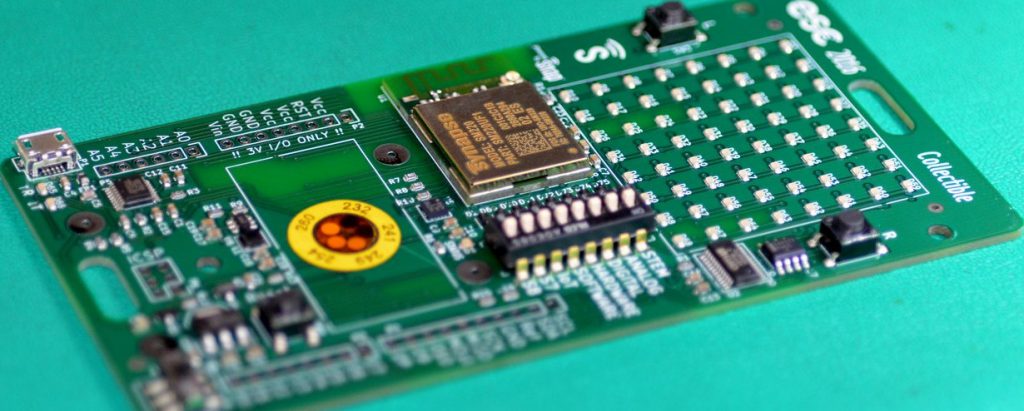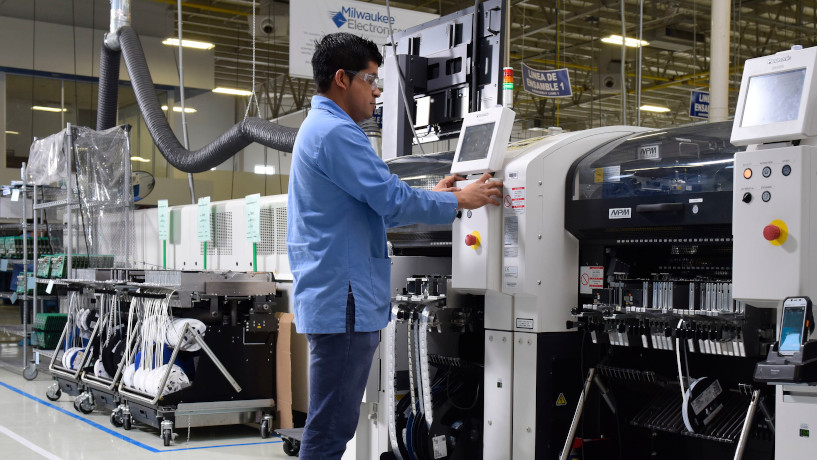Electronics manufacturing can mean a lot of things to a lot of people, and that can make the vendor evaluation process a bit daunting when you just want a couple of PC boards built, or if you’re going for it with manufacturing of a new product. I tend to summarize it into two basic categories: traditional EMS or on-demand electronics manufacturing.
First, some basic definitions:
- PCB = Yes, I know everyone reading here knows that this means Printed Circuit Board, but I feel compelled to start here. It’s the blank board without any parts yet put on it.
- PCBA = Printed Circuit Board Assembly, the finished board with parts assembled on to it.
- EMS = Electronics manufacturing service.
- Prototype = Boards used to test out your design.
- Short-Run = A small to medium quantity of final or near-final PCBAs typically used for firmware development or as sales or press samples.
- NPI =New Product Introduction. From a manufacturing standpoint, this is the process of getting a design from an engineer and making sure it can be reliably manufactured on our assembly lines.
- NRE = Nonrecurring engineering. This is a work and expense category that defines the costs involved in creating fixturing, processes, tests and system modifications required to get a design on to the manufacturing line.
Now on to the two bigger definitions:
Traditional EMS
When I say traditional EMS, I’m referring to a process that involves a long-term relationship with a manufacturer. It’s usually focused on a contract that specifies terms and pricing and requires long-term forecasts (sometimes years into the future), large amounts of component inventory and a financial commitment. Shipments are generally scheduled out ahead of time or based on a Kanban arrangement.
A traditional EMS relationship takes a lot of work from both the customer and the service provider. It is the best way to ensure a reliable supply of high-quality PCBAs. Both the customer and EMS company share in the risks and the rewards. Screaming Circuits’ parent company, Milwaukee Electronics, provides traditional EMS and has so since 1954.
On-Demand Electronics Manufacturing
On-Demand manufacturing is really about customer convenience. Maybe you don’t know how many of a product you will sell and can’t risk a long-term forecast. Maybe you don’t want to hassle with everything that goes along with selecting a traditional EMS partner. Maybe you just have too much uncertainty right now but don’t have time to wait and get it all sorted out. This is where on-demand shines. You just order some boards built and you decide what’s next.

Which one is for me?
Sometimes I’ll be asked about a quantity cut-off to determine if traditional electronics manufacturing or on-demand is the right approach. I wish it were that simple. Screaming Circuits started out in 2003 just building small quantity prototype builds ranging in quantity of one board up to about 50, but Milwaukee Electronics has customers that ask for builds of just 25 units of a particular board once every other month. Milwaukee Electronics has been building high-volumes for well over half a century but Screaming Circuits processes some orders for a few thousand units of a particular board.
Those scenarios seem backwards but it’s really about the relationship and how you want to do business. That Milwaukee Electronics customer has been with us for decades and has other boards that are built in higher quantities. Each new design goes through a rigorous NPI and may be on the line for years. The Screaming Circuits 2,000 unit build may have been from a crowd funded project that sold 2,000 and may never sell another unit.
Most EMS companies do have a minimum dollar per year commitment too. That commitment amount will changed based on how full the manufacturing lines are and other financial or practical considerations. An EMS relationship also often involves NRE expenses. An on-demand manufacturing operation like Screaming Circuits will still have a minimum order dollar amount, but it’s usually a few hundred dollars instead of the few hundred thousand or million dollars with traditional electronics manufacturing. On-demand may have costs for non-standard fixturing, but these charges will, again, typically be significantly less than with traditional EMS.
A lot of people want to just buy something with no strings attached, and that gets them to Screaming Circuits. The e-commerce websites allows for quotes and orders and any time of the day or night, on any day of the year. A on board R&D project is fine, as is a 20-unit prototype build or a 1,000-unit production order. On-demand manufacturing lets you just place your order and go. Traditional electronics manufacturing is there for you if you want a long-term relationship with your manufacturing partner.
To summarize:
If you want a long-term business relationship and can meet the commitment terms, go with a traditional EMS arrangement. Best for ongoing projects or multiple ongoing projects with medium to high volumes on a forecast or Kanban.
If you’d rather just buy as you need or can’t make a long-term commitment, go with on-demand electronics manufacturing. Best for prototypes and small volumes, quick reaction needs or uncertain and unforecastable volume requirements.
Duane Benson

